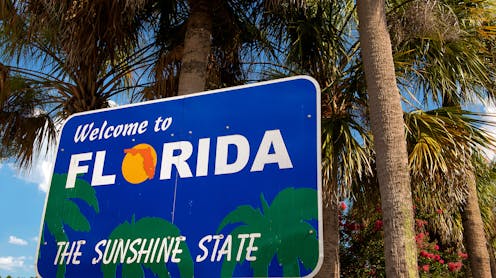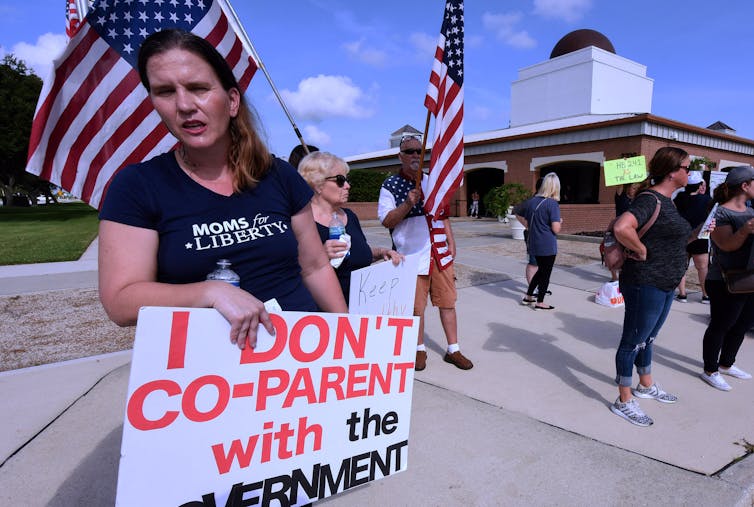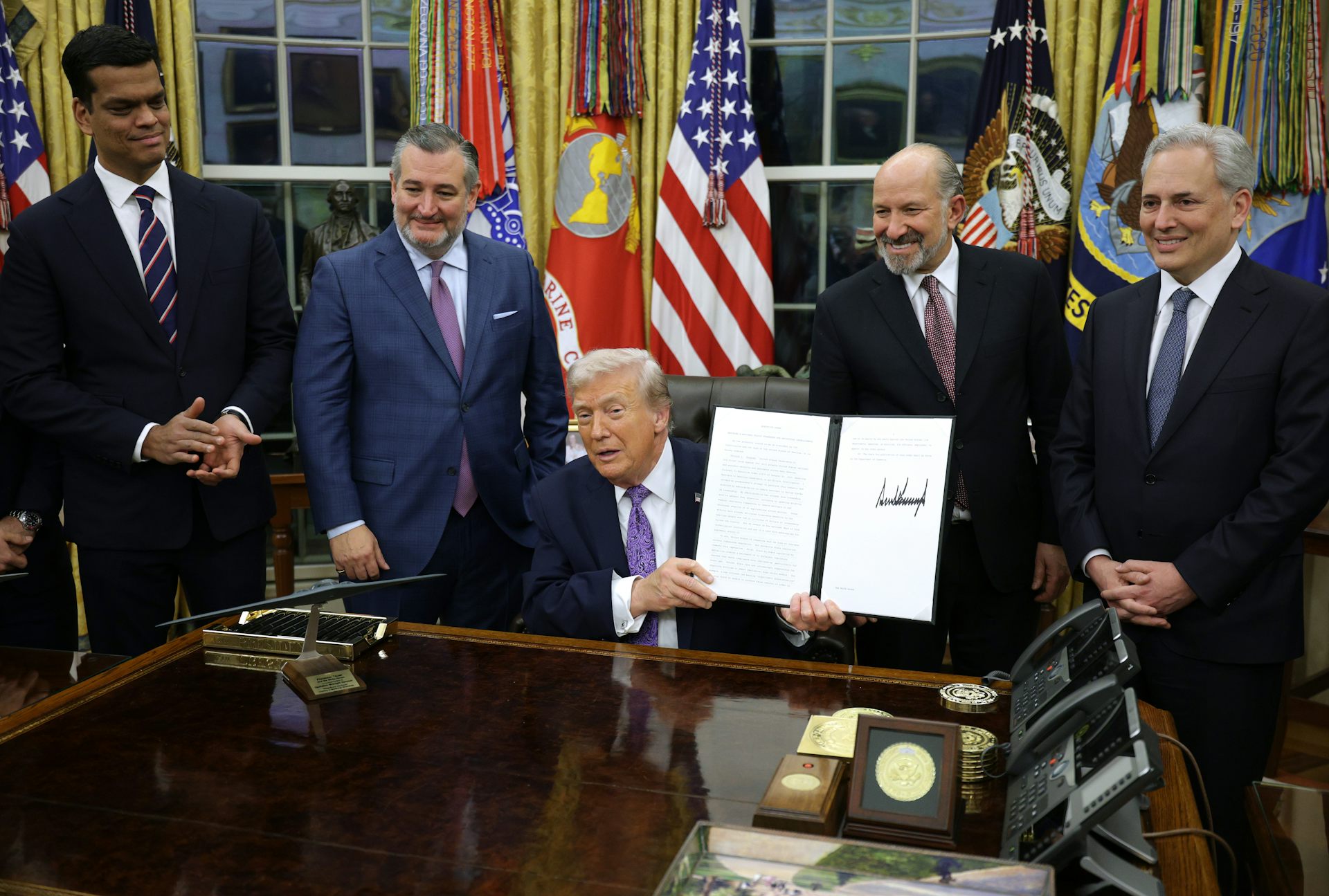Florida, once considered a swing state, is firmly Republican – a social anthropologist explains what
The growth of alt-right activist groups and the state’s response to the COVID-19 pandemic are two factors that help explain Florida’s politics.

Florida has undergone a dramatic political transformation over the past decade from a swing state to Republican stronghold.
Florida’s recent congressional special election on April 1, 2025, showcased the state’s increasingly conservative identity, when Republicans won both congressional seats.
Still, Democrats felt hopeful about these results, since the two Democratic contenders lost by slimmer margins in the 1st and 6th districts than in other recent elections.
As a political anthropologist who has conducted fieldwork in central Florida, I’ve spent over five years tracking the growth of conservative political groups like the Proud Boys and Moms for Liberty, whose leaderships are based in Florida.
I’ve seen firsthand how conservative activist networks and the growth of culture war politics, among other factors, have reshaped Florida’s political identity.

The state that stopped swinging
Although political strategists have historically considered Florida a swing state in presidential elections, it has consistently voted Republican since 1948.
It has only voted for Democratic presidential candidates five times since 1964, for Lyndon B. Johnson, Jimmy Carter, Bill Clinton and twice for Barack Obama. President Donald Trump has won Florida three times in a row, most recently winning the 2024 election in all but six of Florida’s 67 counties.
The main battleground since 2000 has been the I-4 Corridor, which connects Tampa, Orlando and Daytona. In 2000, President George W. Bush won the corridor by 4,400 votes. Since Bush only won Florida by 537 votes, and thus the presidency, the area became a top priority for both political parties.
Some Democrats have said Florida’s political evolution happened gradually and then all at once.
In 2012, there were almost 1.5 million more registered Democratic voters than Republicans in Florida. In 2020, Democrats’ advantage dropped to about 97,000. And by September 2024, there were almost 1 million more registered Republicans than Democrats.
Steve Schale, the head of Obama’s 2008 campaign in Florida, argues that this shift happened because the Democratic Party lost the support of some white voters.
Republicans have also actively courted Hispanic voters, while Democrats falsely believed that young Hispanics would inherently lean toward their party.
This assumption has hurt the Democratic cause because, for example, some Hispanic voters in Florida, like many Cuban Americans, have long favored Republican. In fact, Trump performed so well with Hispanics in Florida in 2024 that it was the only state in which he received more of the Hispanic vote than Kamala Harris.
State-level conservative success
Florida has also had a Republican governor since 1998, a state Senate Republican majority since 1995 and a state House majority since 1997. This Republican dominance has only grown since Trump’s 2016 election.
In 2018, Florida Governor Ron DeSantis received Trump’s endorsement and went from being relatively unknown in the gubernatorial primaries to the Republican nominee. He ultimately assumed office in 2019.
Since then, DeSantis has successfully passed a slew of laws and policies reflecting the conservative values of what he saw as the new Floridian electorate.
For example, DeSantis passed a six-week abortion ban measure into law in 2023.
With DeSantis’ approval, Florida’s state Legislature also blocked diversity, equity and inclusion programs in state colleges in 2023 and banned lessons on sexual orientation and gender identity for public grade school students that same year.
In 2023, the Florida governor also signed a law that allowed people to carry concealed weapons without a permit.
The pandemic factor
Some conservative political pundits and DeSantis supporters say that the governor’s COVID-19 policies are among the factors that have attracted newcomers to the state.
Almost 300,000 people moved from out of state to Florida between April 2020 and April 2021, equal to roughly 903 people relocating to the state each day.
The governor ordered Floridians to stay at home during April 2020, but many of his restrictions were lifted at the end of the month.
DeSantis did not enforce mask mandates, vaccine requirements and other measures that were common in other states.
During my fieldwork in Florida from 2022 through 2024, I met multiple people who moved to rural parts of the state because they did not want their lives to be severely restricted during the pandemic.
One man in his early 50s stated, “During COVID my wife and I realized how screwed we were if things got really bad. We hated the lockdowns and got scared about not having enough food. If things got really bad, we didn’t want to trust other people, we wanted to be self-sufficient. So, we decided to get a place in the middle of the woods, on our own property, that we could go to if everything went to hell.”
This couple settled on moving from out of state to a rural area of Florida, where they thought they had the best chance of avoiding future lockdown restrictions.
DeSantis’ policy successes and his “freedom first” response to the pandemic have been celebrated by conservatives nationally.

Florida’s home for the alt-right
As Florida lawmakers have continued to push conservative policies since the pandemic, Florida-based activist groups like Moms for Liberty have mobilized to support and expand them.
Moms for Liberty was founded in 2021 by three Florida former school board members who opposed COVID-19 regulations during the pandemic.
Moms for Liberty is headquartered in Melbourne, Florida, and is focused on reshaping public school curriculum to exclude what its members see as “woke” themes, like sexual orientation.
The group lobbied for the 2022 Parental Rights in Education Act and the Stop-Woke Act, referred to by critics as the “Don’t Say Gay” law. This law restricts Florida classrooms from teaching kids in kindergarten through third grade about sexual orientation and gender identity, and also limits instruction on these subjects in higher grades.
Florida has increasingly become a stronghold for other kinds of political activists, some of whom were instrumental in the Capitol riots on Jan. 6, 2021. Florida was home to 11.5% of the 716 people who were initially charged with participating in the Capitol riots.
The most notable of these Jan. 6 arrests is Enrique Tarrio, a Miami native who has served as the symbolic leader of the Proud Boys, an alt-right “Western chauvinist” group.
Alt-right activists are a minority of Florida’s conservative population. In my fieldwork, I have spoken to many Florida conservatives who did not identify with the Proud Boys or other alt-right groups – but were still sympathetic to many of their populist and conservative causes.
No longer in play?
Florida is now a major Republican stronghold with Floridians becoming increasingly prominent in national politics. Trump’s Cabinet has 23 people – 16 of them are connected to Florida.
These include Secretary of State Marco Rubio, who served as a senator in Florida, and Attorney General Pam Bondi, who served as Florida’s state attorney general.
Though some Democrats may feel optimistic about the special election results, they have lost the Sunshine State, at least for now.
Alexander Lowie does not work for, consult, own shares in or receive funding from any company or organization that would benefit from this article, and has disclosed no relevant affiliations beyond their academic appointment.
Read These Next
What’s at stake in Trump’s executive order aiming to curb state-level AI regulation
In the absence of comprehensive federal AI regulation, states have stepped in. The Trump administration,…
Data centers need electricity fast, but utilities need years to build power plants – who should pay?
How many data centers will be built – and how much electricity they’ll need – is uncertain. Being…
Sleep problems and depression can be a vicious cycle, especially during pregnancy − here’s why it’s
Inadequate sleep can have negative downstream effects on everyday cognitive functioning and mental health,…





